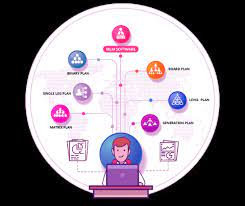Exploring the Evolution of Reddit Through Software Development
The Impact of Software Development on Reddit
Reddit, one of the most popular social news aggregation and discussion platforms on the internet, has undergone significant transformations over the years. Behind its user-friendly interface and vast community lies a complex system of software development that powers its functionality.
Continuous Improvement through Software Updates
Software development plays a crucial role in enhancing user experience on Reddit. The platform regularly releases updates to improve performance, introduce new features, and address security vulnerabilities. These updates are a result of meticulous planning, coding, testing, and deployment by Reddit’s dedicated team of software developers.
Scalability and Reliability
As Reddit continues to grow in popularity, scalability and reliability become paramount. Software developers work tirelessly to ensure that the platform can handle millions of users concurrently while maintaining high performance levels. This involves optimizing code, implementing efficient algorithms, and leveraging cloud technologies to support Reddit’s expanding user base.
Community Engagement through Open Source
Reddit values community engagement and collaboration. The platform has open-sourced several tools and projects to encourage developers worldwide to contribute to its ecosystem. By embracing open source principles, Reddit fosters innovation and creativity within the software development community.
Data-driven Decision Making
Software development at Reddit is driven by data analysis and insights. Developers leverage analytics tools to gather information on user behavior, content engagement, and platform performance. This data-driven approach enables Reddit to make informed decisions regarding feature enhancements, content moderation strategies, and overall user satisfaction.
The Future of Software Development at Reddit
Looking ahead, software development will continue to be a cornerstone of Reddit’s evolution. With a focus on innovation, collaboration, and user-centric design principles, Reddit aims to enhance its platform further and provide an unparalleled experience for its diverse community of users.
8 Essential Tips for Leveraging Reddit in Software Development
- Follow subreddit communities related to software development for valuable insights and resources.
- Engage in discussions and ask questions to learn from experienced developers on Reddit.
- Contribute to open-source projects shared on Reddit to enhance your coding skills.
- Stay updated with the latest trends and technologies in software development through Reddit threads.
- Utilize Reddit’s programming-related subreddits for networking opportunities and collaboration.
- Share your own projects or code snippets on relevant subreddits to receive feedback and suggestions.
- Participate in coding challenges or hackathons organized within the Reddit community for skill-building.
- Use Reddit as a platform to showcase your expertise, connect with potential employers, or find job opportunities.
Follow subreddit communities related to software development for valuable insights and resources.
By following subreddit communities related to software development on Reddit, you can gain access to valuable insights, resources, and discussions that can enhance your knowledge and skills in the field. Engaging with like-minded individuals and industry experts within these communities provides a platform for sharing experiences, learning about new technologies, and staying up-to-date with the latest trends in software development. Whether you are seeking advice on coding practices, exploring career opportunities, or simply looking to connect with fellow developers, participating in these subreddit communities can be a rewarding experience that enriches your journey in software development.
Engage in discussions and ask questions to learn from experienced developers on Reddit.
Engaging in discussions and asking questions on Reddit can be a valuable way to learn from experienced developers. By actively participating in relevant communities and seeking advice from seasoned professionals, you can gain insights, tips, and best practices that can help enhance your software development skills. Leveraging the collective knowledge and expertise of the Reddit community can provide you with new perspectives and solutions to challenges you may encounter in your development projects. Embracing this collaborative approach can lead to personal growth and a deeper understanding of the ever-evolving field of software development.
Contribute to open-source projects shared on Reddit to enhance your coding skills.
Contributing to open-source projects shared on Reddit is a valuable tip for enhancing your coding skills. By actively participating in these projects, you not only gain practical experience in real-world software development but also collaborate with a diverse community of developers. This hands-on approach allows you to improve your coding proficiency, learn new techniques, and contribute to the greater open-source ecosystem. Additionally, engaging with open-source projects on Reddit provides an opportunity to receive feedback, mentorship, and recognition for your contributions, ultimately helping you grow as a developer and expand your skill set.
Stay updated with the latest trends and technologies in software development through Reddit threads.
To stay ahead in the ever-evolving field of software development, it is essential to stay updated with the latest trends and technologies. Reddit threads dedicated to software development serve as valuable resources for professionals looking to expand their knowledge and skills. By actively participating in these threads, developers can engage with a diverse community, share insights, and learn about cutting-edge tools and practices shaping the industry. Keeping abreast of discussions on Reddit can provide valuable insights that help developers stay relevant and innovative in their work.
Utilize Reddit’s programming-related subreddits for networking opportunities and collaboration.
By utilizing Reddit’s programming-related subreddits, individuals can tap into valuable networking opportunities and foster collaboration within the tech community. These subreddits serve as hubs where developers, programmers, and technology enthusiasts converge to share knowledge, seek advice, and engage in discussions on various coding topics. Engaging with these communities not only allows individuals to expand their professional network but also opens doors to potential collaborations on projects, idea sharing, and skill development. Leveraging Reddit’s programming subreddits can be a beneficial strategy for those looking to connect with like-minded individuals and stay informed about the latest trends in software development.
Share your own projects or code snippets on relevant subreddits to receive feedback and suggestions.
Sharing your own projects or code snippets on relevant subreddits is a valuable tip for engaging with the software development community on Reddit. By actively participating in discussions and showcasing your work, you not only receive feedback and suggestions from fellow developers but also contribute to the collective knowledge sharing within the community. This practice not only helps you improve your coding skills but also fosters connections with like-minded individuals who can offer insights and support to help you grow as a developer.
Participate in coding challenges or hackathons organized within the Reddit community for skill-building.
Engaging in coding challenges or hackathons organized within the Reddit community is a valuable tip for software developers looking to enhance their skills. These events provide a platform to test your coding abilities, collaborate with peers, and tackle real-world problems in a competitive yet supportive environment. By participating in such activities, developers can sharpen their problem-solving skills, learn new technologies, and build a strong network within the Reddit community. It’s an excellent opportunity to push boundaries, gain practical experience, and stay updated on the latest trends in software development.
Use Reddit as a platform to showcase your expertise, connect with potential employers, or find job opportunities.
Utilizing Reddit as a platform to showcase your expertise can be a strategic move in the realm of software development. By actively participating in relevant subreddits, sharing valuable insights, and engaging with the community, you not only establish yourself as a knowledgeable professional but also create opportunities to connect with potential employers or discover job openings. Reddit’s diverse user base and active discussions make it an ideal space to network, demonstrate your skills, and stay informed about industry trends, ultimately enhancing your visibility and career prospects in the field of software development.












